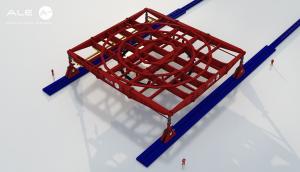Producing ITER's ring-shaped poloidal field magnets is a multi-stage process requiring at least 18 months per coil. Lengths of niobium-titanium (NbTi)
superconductor are progressively wound into flat, spiralled coils called double pancakes, impregnated with resin, and finally stacked and assembled to form finished magnets that weigh between 200 and 400 tonnes.
The European Domestic Agency completed an on-site
manufacturing facility in 2012 for the fabrication of the largest poloidal field coils and, today, the building is being progressively equipped with the handling and tooling equipment required for the first qualification activities to get underway in mid-2016.
From a contractual point of view, six work packages will cover the full process of poloidal field coil fabrication, including overall engineering integration, tooling, site and infrastructure management, manufacturing, and cold testing. Contracts signed to date by the European Domestic Agency include those for winding tooling (SEA ALP Italy), site and infrastructure (Dalkia-Veolia France), engineering integration (ASG Superconductors, Italy) and, in the latest news, the contract for the supply of handling and impregnation tooling.



